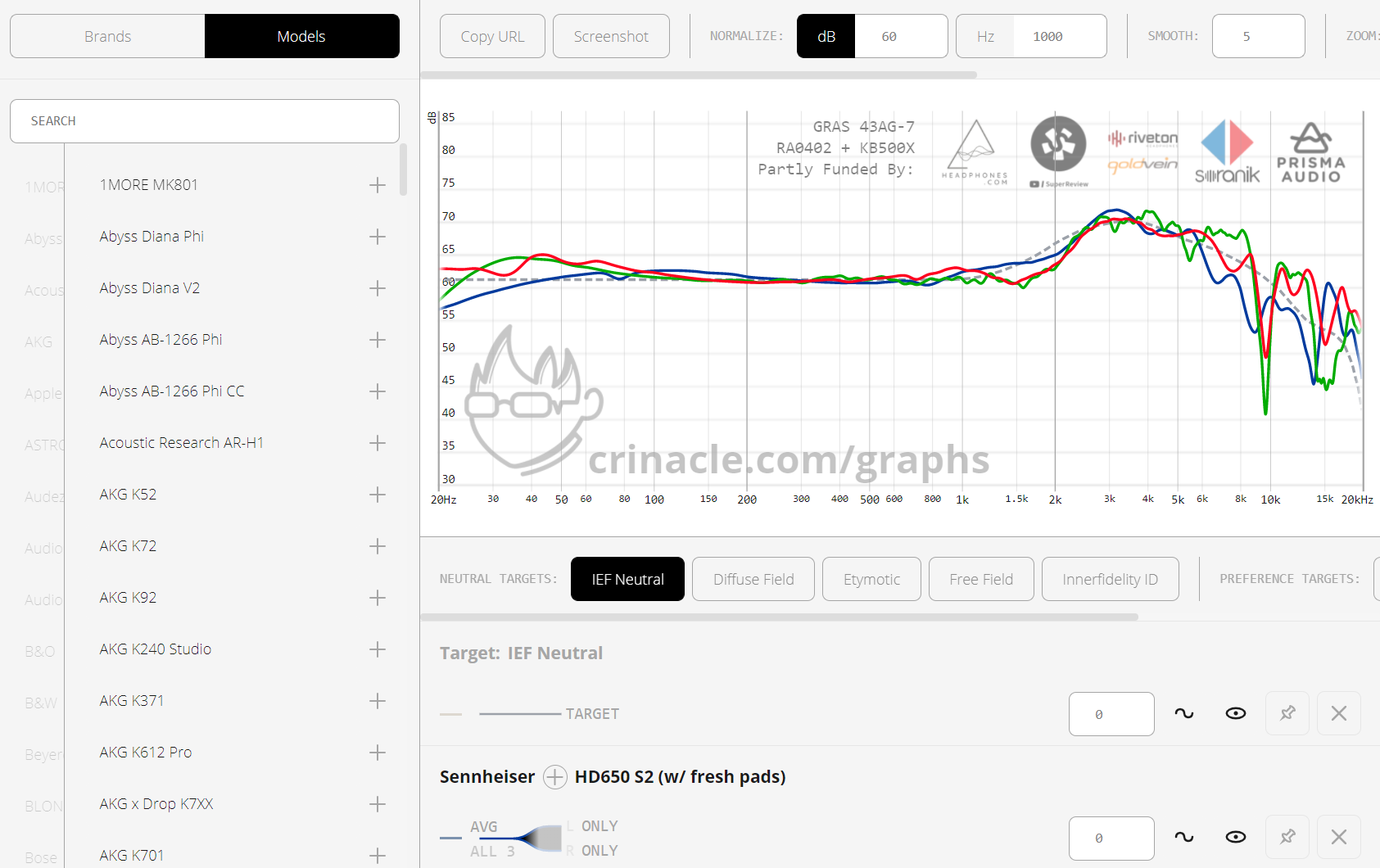This is a review, detailed measurements, listening tests and equalization of Sennheiser HD 490 Pro open back headphone. It was kindly drop shipped to me and costs US $399.
View attachment 365151
The headphone is ultra light courtesy of plastic composite that manage to also feel extremely solid. The included cord feels like premium silicone material. It even has a little coil next to the connection to the headphone as to offer some slack in case of hard pull. Overall there the look and feel matches the "Pro" designation at its price point.
A set of velour pads came installed on the headphone. Another set of thinner, gray tweed pad is also included. The box nicely shows the frequency response of each but sadly, misses to label them anywhere. I had to measure them to figure out that the velour pad is the "producer" one with more bass and the tweed, "Mixing."
If you are not familiar with my headphone measurements, please watch this tutorial on how to interpret them and my method of testing:
Sennheiser HD 490 Pro Headphone Measurements
I started with the velour pad as stated above:
View attachment 365153
We have deficiencies in lower bass and lower treble but otherwise good compliance. Seeing the bass droop, I thought this was the mixing pad and the other would fill that hole better. I was wrong:
View attachment 365154
Note that I had to compensate a bit (half a dB) for volume as the tweed pads are thinner and hence closer to the test fixture microphone. There is impact in other regions of response but some of this could be due to repositioning of the headphone. Notice though the ultra close response of both earphones. They may be doing a better job of matching the drivers than some other headphones.
Swapping pads can be a pain in the neck. While still not quite intuitive here, I found it easier to do that with this headphone than some of the others I have tested.
Staying with "mixing pads," distortion is kept quite low at 94 dBSPL but naturally rises in bass as levels increase:
View attachment 365155
Seeing that we have to boost the bass, you are probably looking at the red response than blue which still is not bad. Here is the distortion in absolute:
View attachment 365156
Group delay indicates less than usual level of internal reflections and diffractions:
View attachment 365157
Impedance is middle of the road but rises in bass to over 200 ohm (where you need most power)
View attachment 365158
While sensitivity is good, you still need a decent headphone amplifier to drive it properly:
View attachment 365160
Sennheiser HD 490 Pro Listening Tests and Equalization
I was listening to my everyday Dan Clark E3 headphone when I paused and switched to HD490 Pro. There was a rather dramatic difference with good few steps drop in fidelity. I won't try to explain the difference other than showing that with EQ, a lot of that gap can be reduced:
View attachment 365161
I started with bass and initially put in a PEQ as to not boost infrasonic spectrum. While the sound was much warmer and fuller now, the bass lacked the impact I get when I listen to Sennheiser HD 650 with EQ for example. So I changed that to a shelving filter but it made little difference in that regard. Expect bass to be "tight" but not deep and substantial.
The boost centered around 2500 Hz brought the needed energy that is responsible for spatial effect. It worked very well creating "B+" rating in my book in that regard in how instruments were separating around my ears.
I usually don't go above 5 kHz in my EQ as my level of trust in measurements starts to drop from that point on. Lately I have been experimenting and think I could safely go higher. In this case, I EQed at 7.3 kHz bringing that peak down. While the effect is quite subtle, it counteracted some of the brightness that the lower treble boost provides. I call this filter optional.
Overall, it was pretty easy to develop the EQ and result was a very nice transformation of the headphone. While I missed my deep bass per above, overall fidelity felt neutral and at the same time, fairly exciting. I cranked up the volume and I could detect no hard limit setting in which is good.
Conclusions
A lot of the headphone industry is till sticking to deviating from our target curve. This is especially so in bass. I could sort of understand having flat bass response but don't understand the droop even lower. Many also have the deficiency in lower treble which I guess goes with the lower bass level. But we need that region to give the spatial qualities to a headphone as otherwise, the experience can be quite sub-par compared to speakers.
Anyway, while we have familiar frequency response deviations, other aspects of the HD 490 Pro are pretty good from fit and finish to level of distortion.
Overall, I can't recommend the HD 490 Pro without equalization. Like many headphones, it does take well to EQ and delivers a much better experience.
-----------
As always, questions, comments, recommendations, etc. are welcome.
Any
donations are much appreciated using
: https://www.audiosciencereview.com/forum/index.php?threads/how-to-support-audio-science-review.8150/


